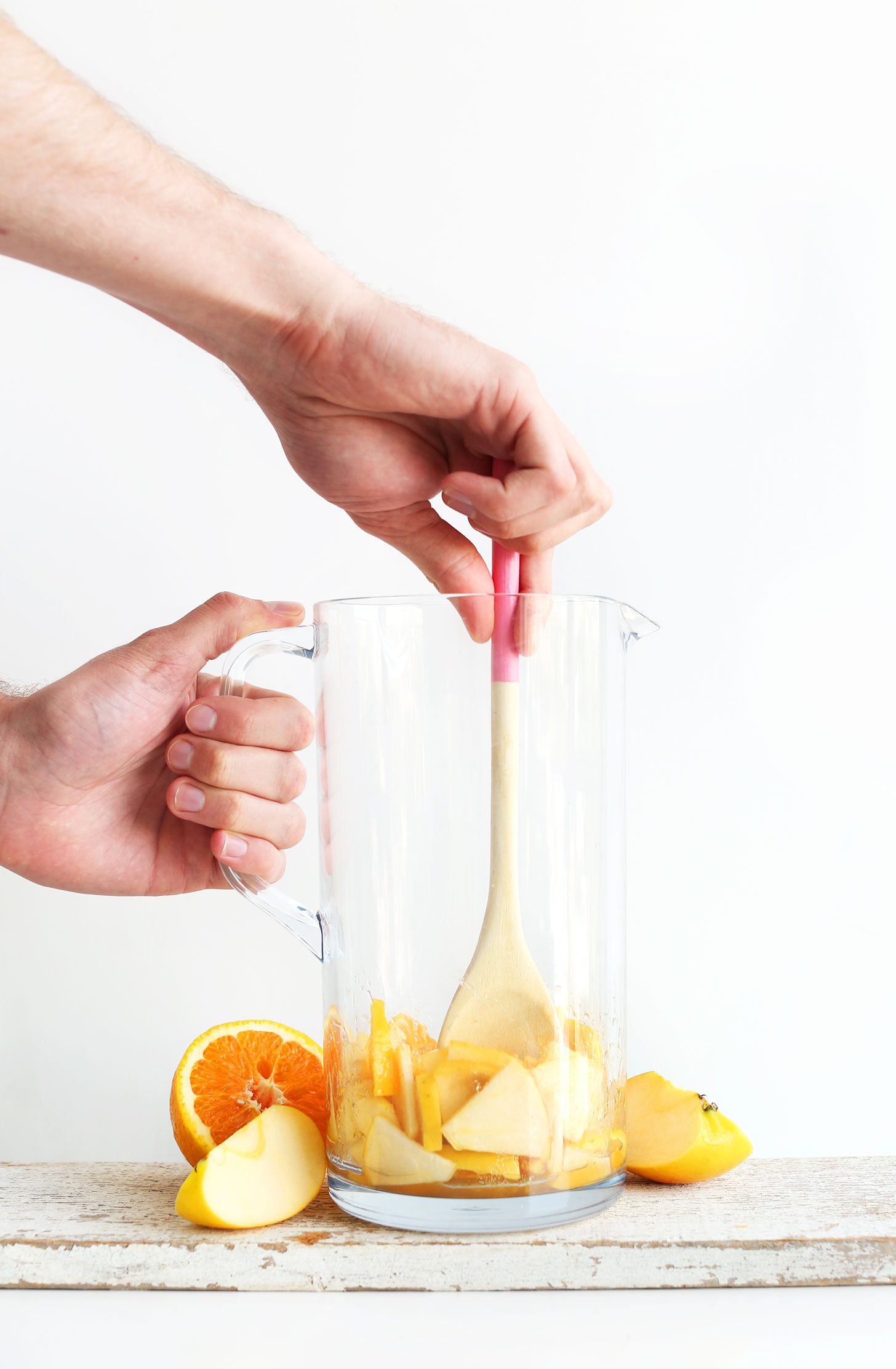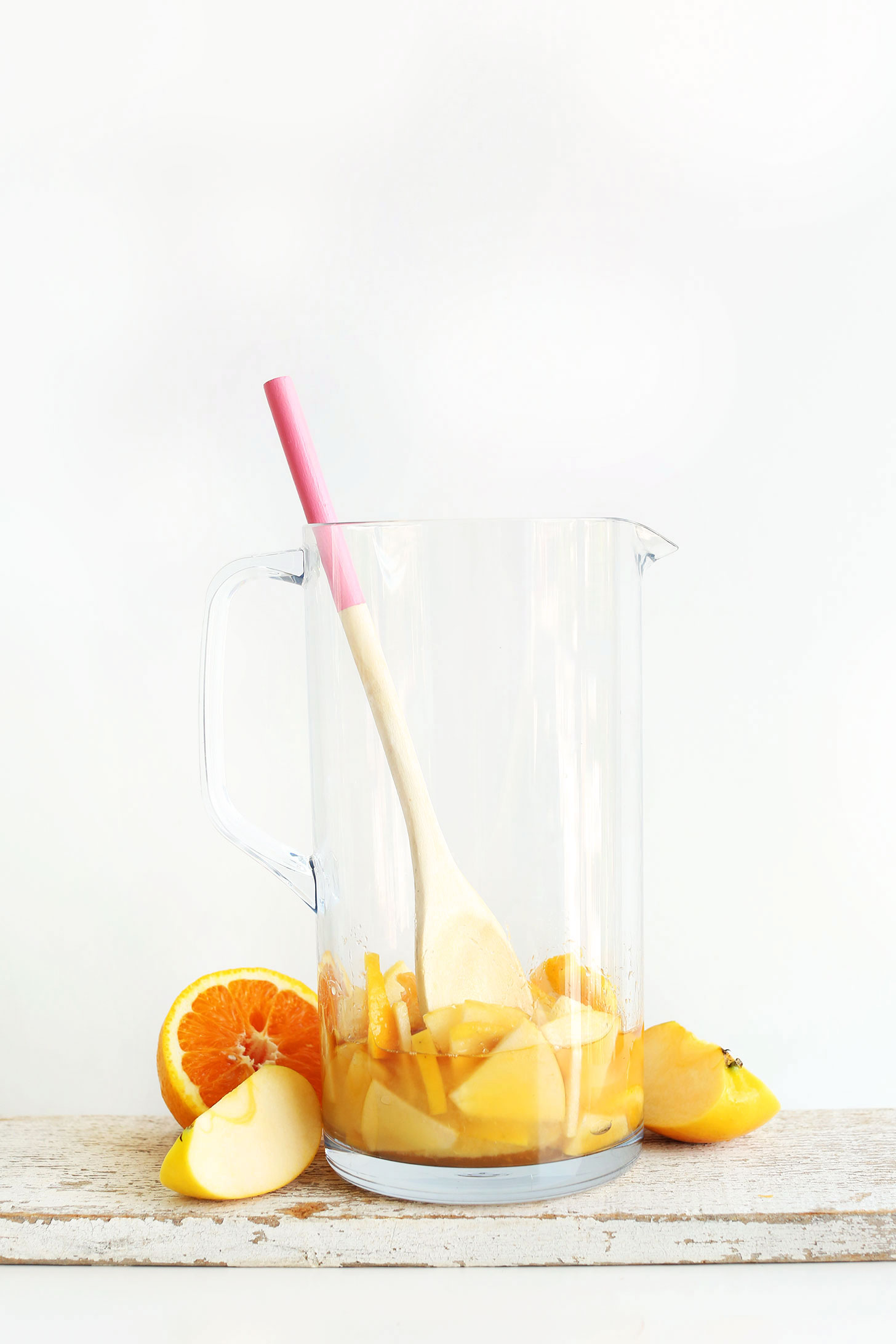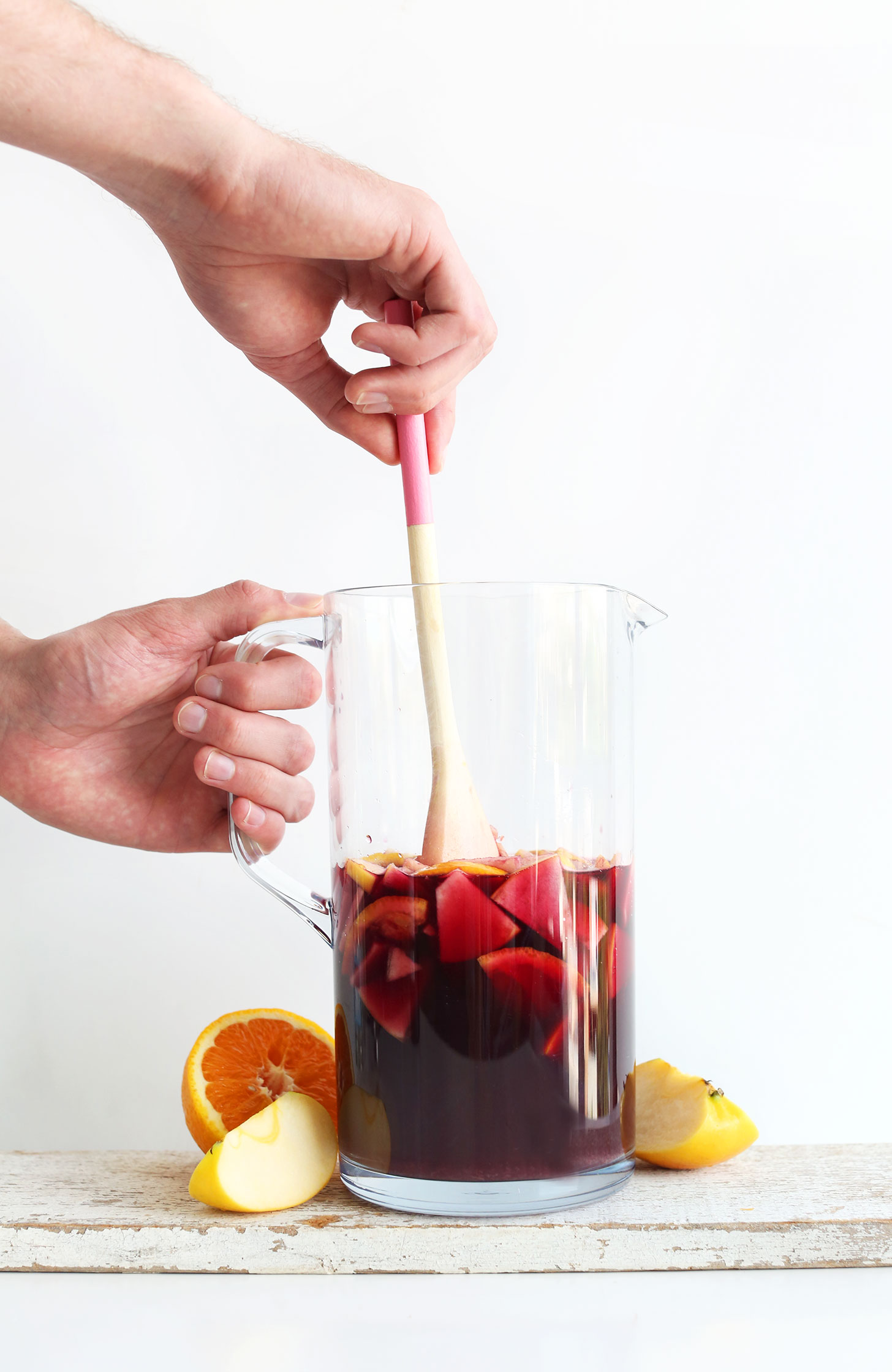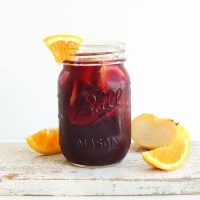Perhaps my recollection of that first drink is slightly biased. We’d just arrived to Barcelona from a long, tiring train ride, and then walked what seemed like miles carrying 40-pound backpacks into the city to reach our AirBnB. We were tired and hangry, to say the least. Our first thought upon dropping our bags was “tapas and sangria.” So off we went in search of sustenance, and what we found was glorious. Can we all just agree the Spanish do it well, “it” being everything? Traditionally the Spanish enjoy coffee in the morning, work a little, take an afternoon rest (or siesta), work a little more, then retire in the evening by eating tapas and drinking good wine with the people they love. Eventually, they slumber only to do it all over again the next day. If that doesn’t sound like a slice of heaven, I don’t know what does. Oh, and did I mention they gifted the world with sangria? Does it get any better than this lush, fruity beverage? I think not.
Origins of Sangria
The earliest versions of sangria are believed to have originated more than 2,000 years ago when Romans, making their way through the Iberian Peninsula, planted vineyards along the way. And because drinking water was unsafe, it was often fortified with wine, spices, and herbs. The earliest versions of what we now know as sangria were made in England and France in the 1800s, and sangria was eventually popularized after its formal arrival in the U.S. at the 1964 World’s Fair in New York. Despite its global popularity and common association with Spain, there is no official formula for sangria in Spain and locals are more often known to enjoy a drink similar to sangria known as tinto de verano. So while some Spaniards may enjoy sangria, it is a more popular drink among tourists. (source) This recipe is my humble offering to a sangria-loving world. I’ve tasted, tested, researched, retested, and what I’ve come up with is this easy, 6-ingredient, traditional red sangria that’s got everything I’m looking for: FruitSweetDryLushSmoothRefreshing& Boozy I think I’m in love. Though there are many interpretations of what “traditional sangria” is, I’ve found that it typically requires these main components: Fruit (like apples and oranges)Orange juiceA sweetener (like brown sugar or cane sugar)A liquor (like brandy or rum)Bold, fruity, dry Spanish red wine (like Tempranillo, Garnacha, or other Rioja wine)& Ice (for chilling) For this version, I went with brandy because as soon as I smelled it, I immediately thought, “this smells like sangria!” But of course, if you’d rather use rum, be my guest. This sangria is my new go-to summer drink. It’s: SimpleSweetSlightly dryFruityBoozySummeryRefreshing& Simple Enjoy this recipe alongside any of your favorite summer dishes. A few of our favorite pairings include patatas bravas, stuffed peppers, veggie burgers, and salads. If you do give it a try, let us know what you think by leaving a comment and rating it so other readers know how much you loved it. And while you’re at it, take a picture and tag it #minimalistbaker on Instagram! We love seeing what you come up with. Cheers, friends!







